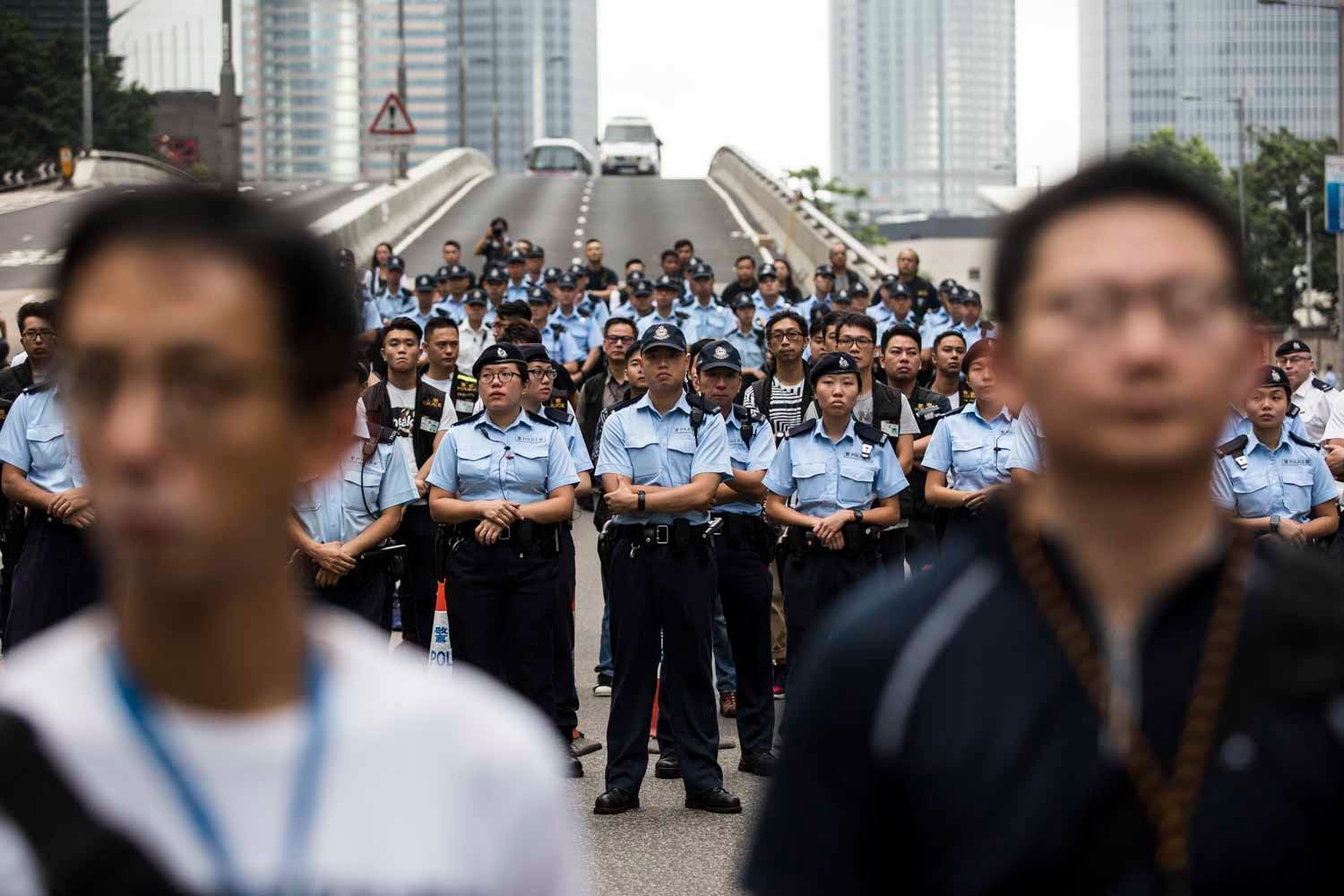Hong Kong police deployed female cops to clean up their colleagues’ mess
Four days after Hong Kong saw some of its worst political unrest, an estimated 2 million people again flooded the streets yesterday (June 16) to protest a hated extradition law, further galvanized by seething popular anger against police for their use of force against largely peaceful demonstrators last week and what many see as a problematic designation of the protests as a riot.


Four days after Hong Kong saw some of its worst political unrest, an estimated 2 million people again flooded the streets yesterday (June 16) to protest a hated extradition law, further galvanized by seething popular anger against police for their use of force against largely peaceful demonstrators last week and what many see as a problematic designation of the protests as a riot.
But while protesters’ demands for the extradition bill’s full withdrawal—not just a suspension—and the resignation of the city’s top official Carrie Lam remained unchanged, there was something manifestly different on the streets yesterday: riot police were nowhere to be seen. The helmets, shields, and masks that were so ubiquitous on Wednesday (June 12) were replaced with lightly-armed officers, many of them in baseball caps or in plain clothes, who were all too ready to cede the city’s streets to protesters with no resistance.
“Maybe they’ve gone home,” one onlooker remarked to an AFP reporter. Others, mostly unmasked, sat around as if they were having a picnic in the middle of a highway. One even shared a burger with a reporter.
And whereas last Wednesday’s deployment of police officers appeared to be almost entirely male, yesterday saw a marked increase in the presence of female cops. Uniformed women were out in force this morning (June 17), too, as the police appealed to protesters who had occupied a major road to leave voluntarily, taking pains to emphasize that they were not being forcibly cleared out (link in Chinese) even though a small number of officers in riot gear remained on standby.
The police even sent out a female public relations officer to address the press. A quick scroll through the police force’s videos on its Facebook page shows most press briefings conducted by male officers. This is perhaps not entirely surprising, given that women make up less than 16% of the police force, according to 2013 numbers. And this morning, the police rolled out a female negotiator (link in Chinese) to persuade the protesters to leave the road.
It’s hard to read the complete transformation in optics—from officers who chased down protesters, fired a record number of tear gas canisters, targeted journalists, and swore at demonstrators (link in Chinese), to mild-mannered staff who didn’t so much as lift a finger—as anything other than an acknowledgement from the police that they had been overly aggressive and sparked public fury over what was deemed a heavy-handed and an excessive use of force.
The Hong Kong Police Force did not respond to a request for comment.
Research on corporate leadership seems to back up the decision to deploy more female officers. It has been found that companies frequently bring in women to lead during times of crises. In this case, of course, the female officers are not leading, but are made the face of the force.
In the case of the Hong Kong police force, the strategy of deploying women in times of crises has historical precedent: during the city’s 1967 riots against British colonial rule, unarmed female officers were regularly deployed to defuse tensions because they were seen as presenting a less aggressive image. And in 1992, the police force established its first women-only tactical unit, named the Tango Company, comprised of officers who had undergone anti-riot training.